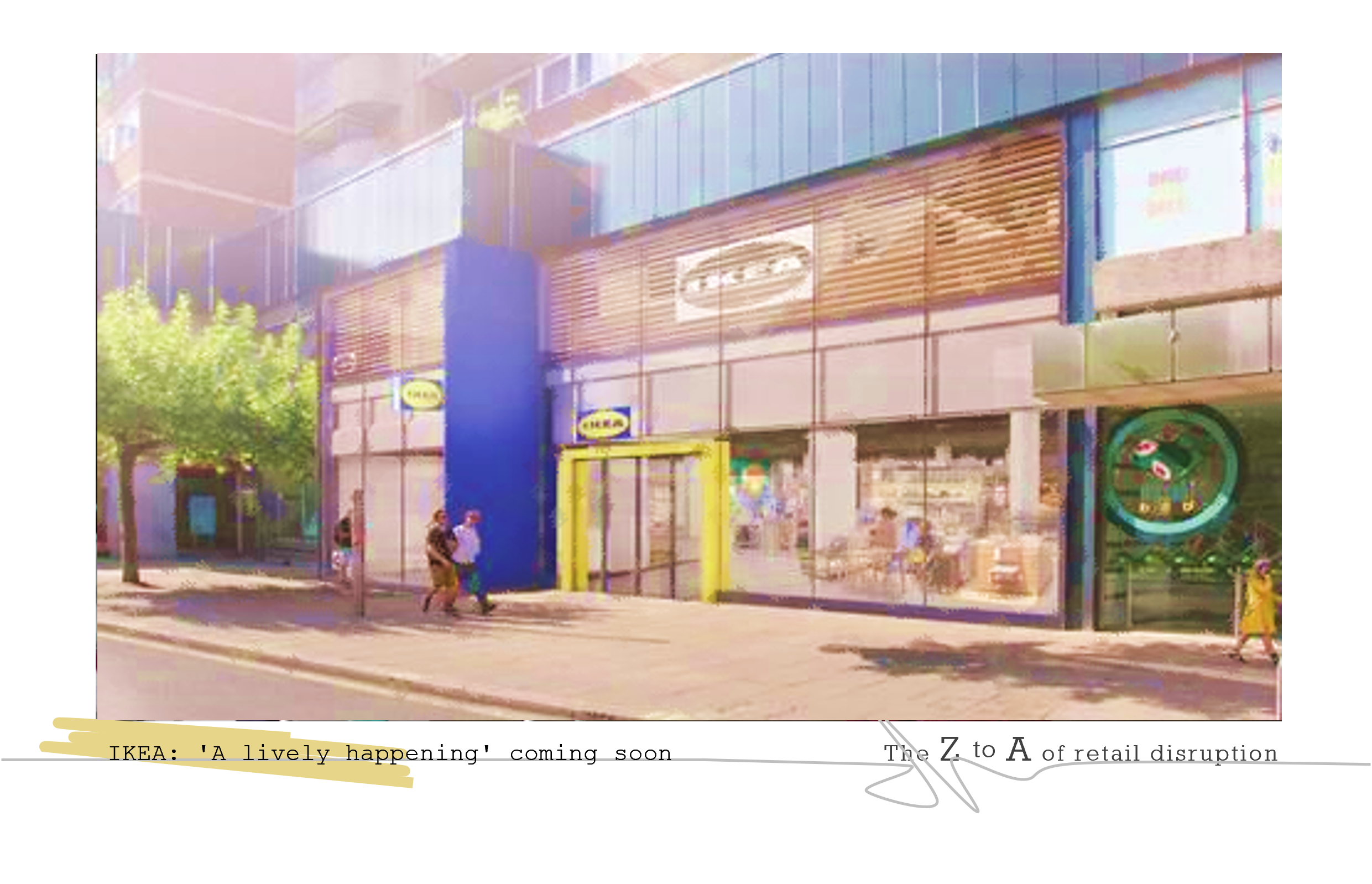IKEA: ‘A lively happening’ coming soon to a place nearby
There are many interesting learnings from the opening of the new IKEA shops across the globe, not least the fact that the roll-out is happening at a pace against a back-drop of shop closures, particularly amongst established chains.
There is much to digest in the location of the shops, the retail and social environments that IKEA is creating around them, the role of physical shops in the wider digital landscape, an offer of second-hand furniture and the relationship between food and retail. However, what is most impressive and significant, is that IKEA is going further than ever, deeper than others, in putting the customer truly at the heart of this new retail landscape.
From ‘customer experience’ to ‘community experience’
Much is being said about the smaller sizes of the new shops, the reduced inventory and the increased role of the experience, but the real innovation is being carried out, outside the shop. It is being implemented well before the shop design is even considered. The commercial success is built on foundations that are not made of cement or steel, but data and collaborations.
IKEA’s latest opening in Hammersmith, London exemplifies this strategy. The brand has taken over a whole shopping centre, far larger than it requires for the shop itself as it builds around it the collaborators and the environment that will make it successful. This includes hospitality, cafes and complementary retailers to make the site attractive and engaging as a destination. A destination built on more than just the IKEA shop itself.
Opened under the new Livat branding – a Swedish word meaning ‘a lively happening’ – these meeting places are designed to bring people together, either for shopping, eating, socialising or to work.
‘Livat’ ‘a lively happening’
Whilst the Hammersmith shop is clearly a social shopping and hospitality proposition, each destination across the world is unique in how it builds its meaning with the local customer base.
At Livat in Changsha, China, for example, IKEA was aware of the needs of a city that has become a hub for new start-ups. as a resuly alongside the IKEA shop, it built more than 500 ‘small home office’ flexible working units to help solve the problem of a shortage of office space. It included a gym, and 120,000 sq ft of green space to allow customers the “ability to entertain, work or sleep, reflecting their lifestyles”.
IKEA has also revealed plans for its first meeting place in India, in the northern city of Gurugram. Alongside its food, retail and leisure offer, the new site will apparently offer customers ‘edutainment’ learning spaces and will act as a communal space for festivals and cultural exhibitions with an emphasis on sustainability.
‘Groundwork’ not ‘Deskwork’
The months of research is apparently paying off both commercially and socially with footfall and sales beyond expectations. The key is the fact that the important market and data research is being complemented through ‘groundwork’ that involves many days being in the area, seeing the location with real eyes, discussions with local residents and businesses, potential customers alike.
The goal is to uncover and deliver what the community wants from its new IKEA and its immediate environment. The task is to deliver that through architecture, assortments, entertainment and human collaborations
Welcome to your world
The attention to the detail of people is also illustrated by the assortment and layout in the new Hammersmith shop.
As expected it features a variety of Ikea’s iconic room sets for the bedroom, living room, kitchen, bathroom and home office. What is impressive is that everything about these sets and the products they display is based, not just on demographic research and sales data, but by conducting virtual home visits with Hammersmith residents to ensure the offer is tailored to their homes and needs.
So imagine that. IKEA were actually welcomed into the homes of hundreds of its potential customers to see the size and the scale, the needs and tastes of the customer community that is was building its shop to serve. Visually and verbally this has created without doubt one of the most personalised and customised assortments ever delivered into a physical shop.
And with a much reduced inventory with only 1,800 options available for immediate purchase, this has a profound impact not just on the look but also the potential performance of the shop to deliver sales.
When we now talk about location strategy, and assortment grading, IKEA has clearly shifted its understanding and performance to a whole different ballpark. A ballpark that probably includes green spaces, offices, cafes, restaurants gyms, housing and even schools, as well as the obligatory blue & yellow shop.
